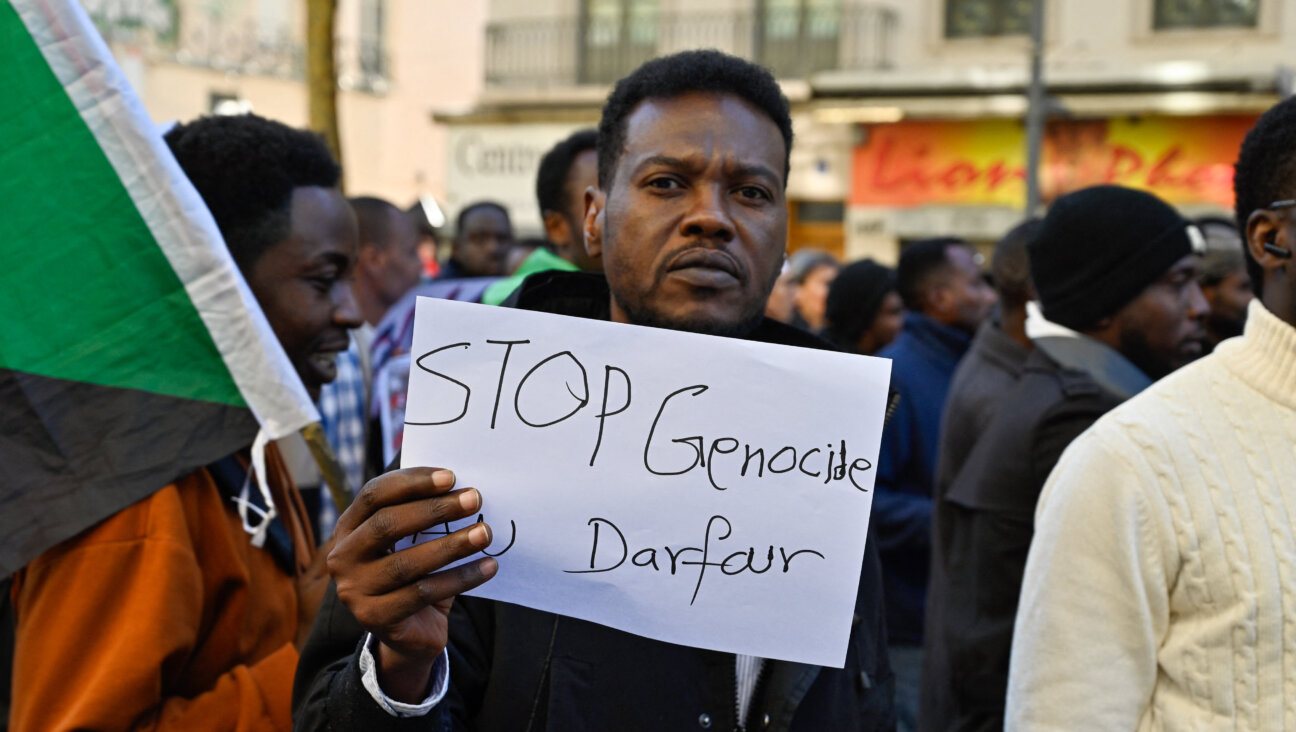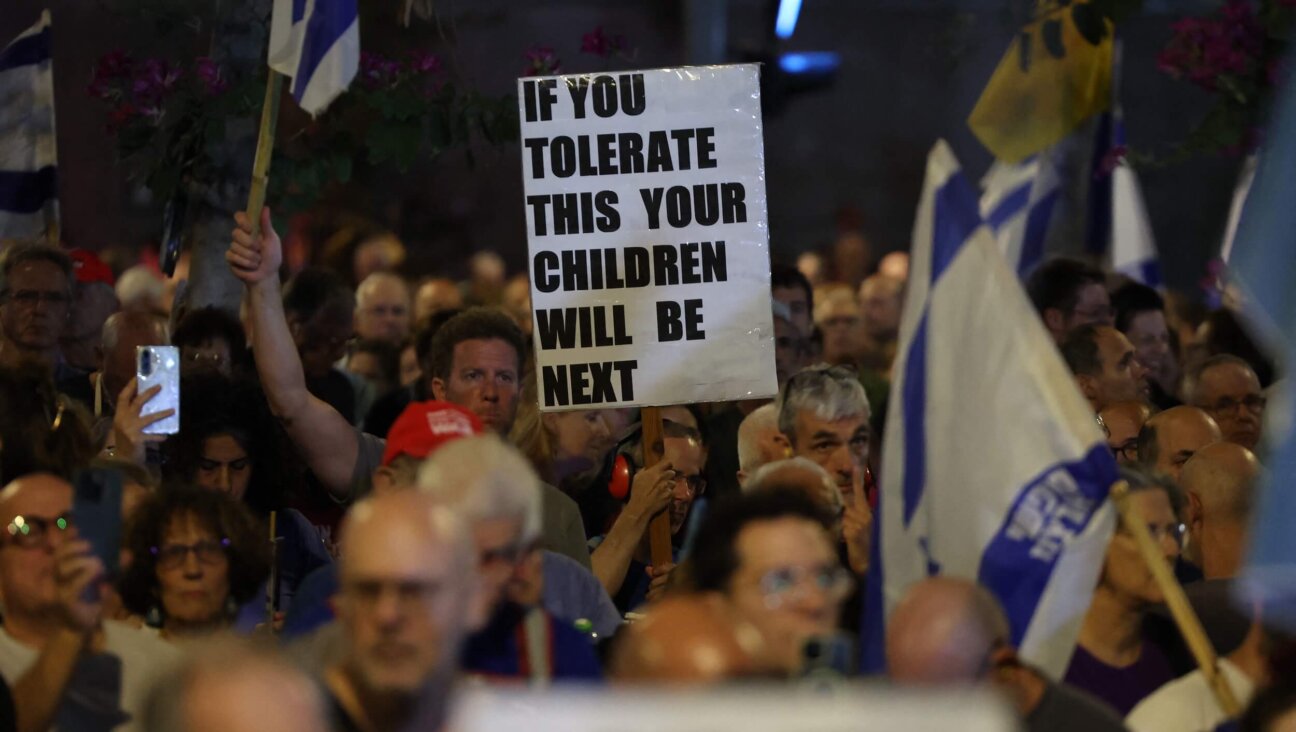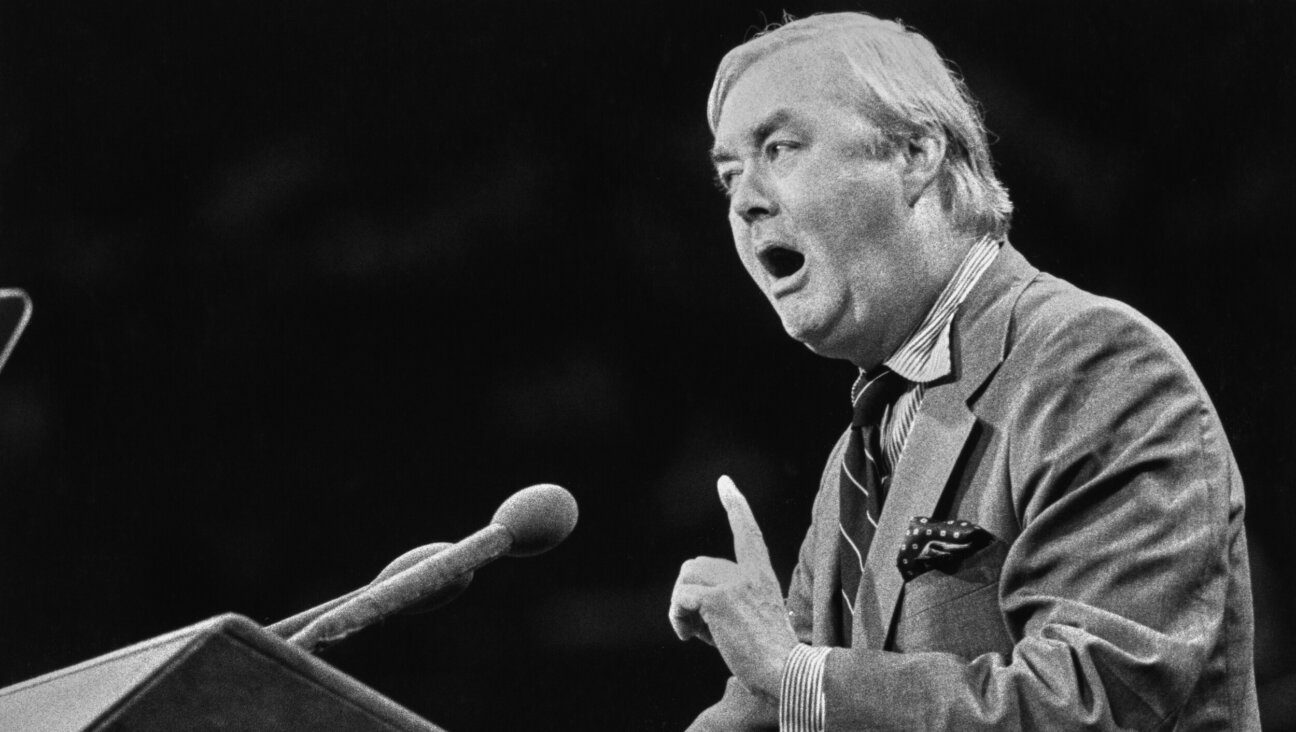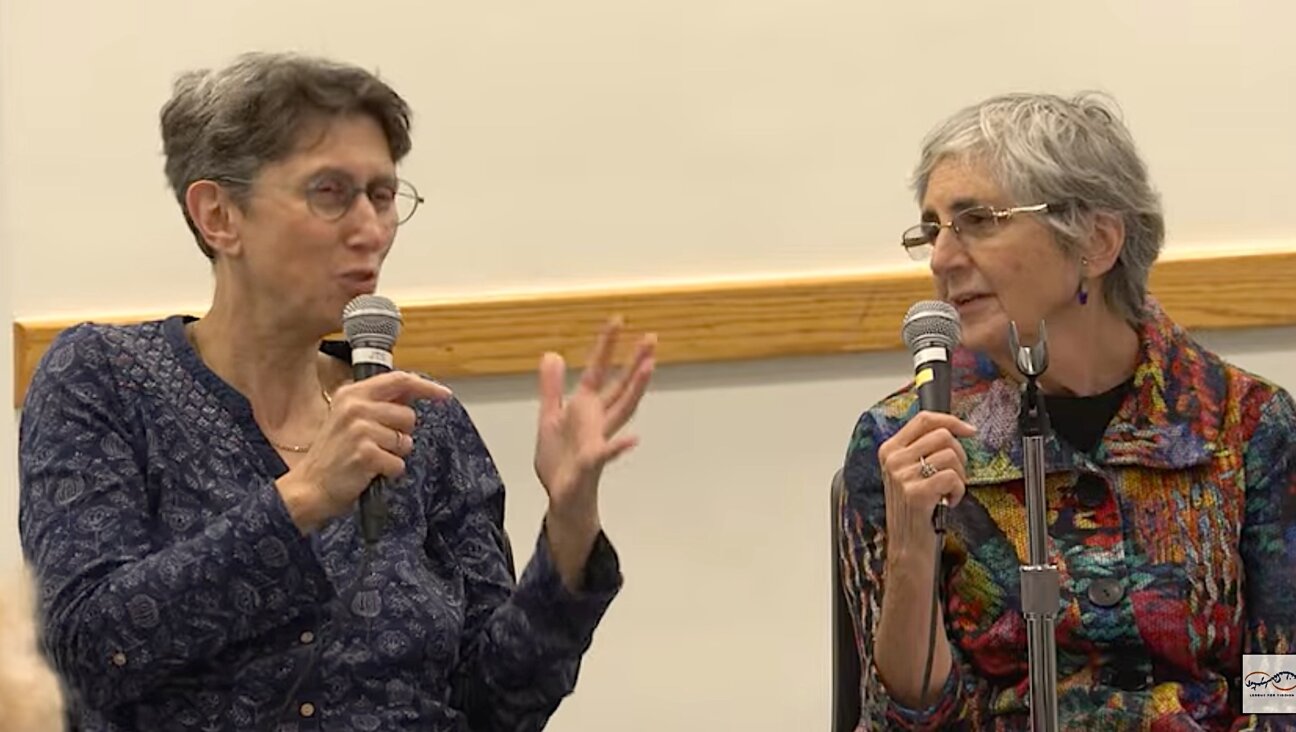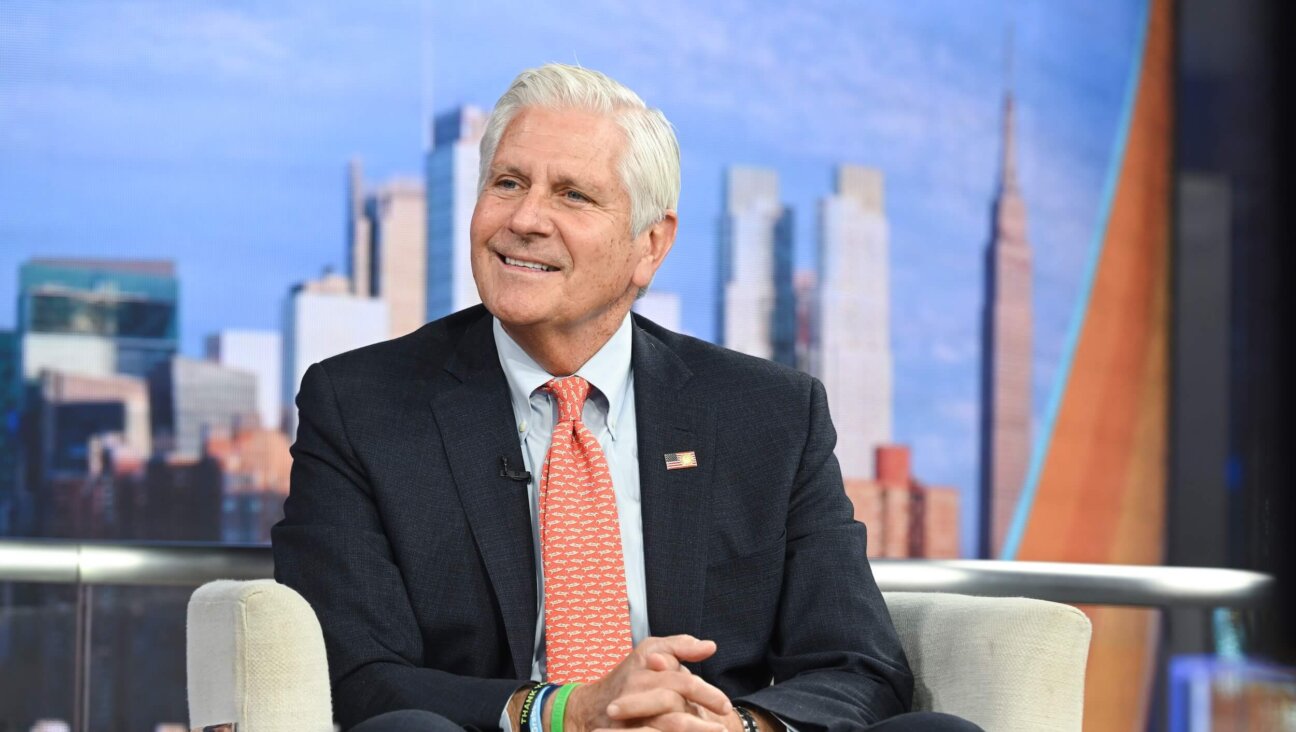Don’t let Trump’s theatrics distract from the true horror of his plans for Gaza
When we give into the outrage machine, we can lose track of what really matters

President Donald Trump and Israel’s Prime Minister Benjamin Netanyahu speak during a press conference on Feb. 4. Photo by Andrew Caballero-Reynolds / AFP
President Donald Trump’s new proposal for Gaza — namely, to have the United States take it over and develop it into a “riviera of the Middle East,” an idea he announced during Israeli Prime Minister Benjamin Netanyahu’s visit to the White House this week — is outlandish and ill-conceived.
It is right and appropriate to be gobsmacked by the ridiculous proposal. But I hope that, when we strip away the attention-drawing theatrics of this announcement, we remember that the cruelest and most ridiculous part of it is an idea Trump floated last month to far less fanfare: forced displacement of Gaza’s entire Palestinian population.
It is not difficult to see why Trump’s Tuesday comments generated so much more interest and pushback than his previous statements on Gaza. There was much about them that was eye-popping: the blithe suggestion of a new era of U.S. imperialism; the echoes of past callous comments by Trump’s son-in-law, Jared Kushner, about the potential for Gaza waterfront property; the president’s record as a real estate developer with dubious business practices; the immediate questions of practicality, like how exactly the U.S. would run Gaza, particularly given that the Trump administration just went to war with USAID.
Even Trump officials have tried to walk back elements of the plan, and Trump himself stressed that he doesn’t mean there would be U.S. boots on the ground. But he also doubled down on his proposal on his social media network, Truth, Thursday morning.
“The Gaza Strip would be turned over to the United States by Israel at the conclusion of fighting,” he wrote. “The Palestinians, people like Chuck Schumer, would have already been resettled in far safer and more beautiful communities, with new and modern homes, in the region. They would actually have a chance to be happy, safe, and free.”
But the slew of outrage — and less-prominent applause for Trump’s plan, including from the rightwing Zionist Organization of America and various Israeli leaders along the political spectrum — risks keeping us from understanding just how brutal and inhuman the core of his plan, forced displacement, is.
Trump has, since his first week in office, spoken repeatedly about the idea that the nearly 2 million people in Gaza should simply be moved somewhere else (no matter whether they would like to or not).
“You’re talking about a million and a half people, and we just clean out that whole thing,” the president said in late January. “Almost everything’s demolished, and people are dying there, so I’d rather get involved with some of the Arab nations and build housing in a different location where I think they could maybe live in peace for a change.”
This idea did not garner the same flurry of headlines, coverage, or outraged statements. It wasn’t announced dramatically, with Israel’s leader standing next to Trump and contentedly smirking. But the core element is the same: Trump has decided that displacement of Palestinians from Gaza — which my fellow Forward columnist Dan Perry noted could constitute ethnic cleansing — is the path forward.
A statement by several Arab nations’ leaders said such plans “threaten the region’s stability, risk expanding the conflict, and undermine prospects for peace and coexistence among its peoples.”
And even as some Trump officials say that the plan only really entails temporary displacement — a dubious claim, given that there is hardly an abundance of historical precedent for whole populations being moved out of and then back into an area — others have alarmingly suggested they don’t really understand why Palestinians need to be in Gaza at all.
“Peace in the region means a better life for the Palestinians. A better life is not necessarily tied to the physical space that you are in today,” Trump’s Middle East envoy, Steve Witkoff, said this week. “A better life is about better opportunity, better financial conditions, better aspirations for you and your family. That doesn’t occur because you get to pitch a tent in the Gaza Strip and you’re surrounded by 30,000 munitions that could go off at any moment.”
With respect to Witkoff, he is talking about a piece of land as contested as any in the world. People have fought and died for it — and been killed for it — for almost eight decades. Surely this is the last part of the world in which a people’s ties to a land needs to be explained: As the creation of Israel itself attests, the drive to live in a place you consider to be your homeland — even if, as for Palestinians in Gaza, it’s only a piece of that homeland — is an exceptionally powerful one.
In fairness, sort of, to team Trump, it’s not as though his is the first plan for Palestinians that doesn’t take into account practicalities, generally, or how Palestinians might feel about them, specifically.
For example, former President Joe Biden’s administration insisted that Israel’s war in Gaza would somehow lead to the establishment of a two state solution, even as Netanyahu publicly said he would never allow a Palestinian state.
The United States built and then dismantled a $230 million pier to get aid into Gaza at least in part because Israeli leadership was frustrating Biden in limiting humanitarian aid.
Even the Abraham Accords of the first Trump administration advanced the idea that peace in the region would come from normalizing relations between Israel and its neighbors — not from finding a long-term solution to the dispossession and statelessness of Palestinians.
Still, since Trump is the president now, it is essential that rather than rehash the past, we focus on the plans he is currently pushing — not the flourishes with which he presents them. He wants to forcibly displace a population that has already survived extreme violence and deprivation. A drama doesn’t need theatrics to be a tragedy.

